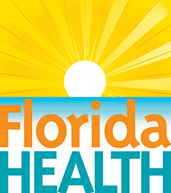It's a New Day in Public Health.
The Florida Department of Health works to protect, promote, and improve the health of all people in Florida through integrated state, county, and community efforts.
Chemical Spills in Florida: Stay Alert & Stay Safe
Contact: Florida Health
- 850-245-4444
- health@flhealth.gov
-
Mailing Address
Florida Health
4052 Bald Cypress Way
Tallahassee, FL 32399
When Every Second Counts
 Chemical spills can occur in the blink of an eye—transforming an ordinary day into a potential emergency. In Florida, where busy ports, highways, and industrial sites are part of everyday life, the risk is real and unpredictable. Knowing how to recognize a spill, protect yourself, and act quickly can make all the difference when every second counts. This guide breaks down everything you need to know, providing clear, practical steps to help you stay safe and informed.
Chemical spills can occur in the blink of an eye—transforming an ordinary day into a potential emergency. In Florida, where busy ports, highways, and industrial sites are part of everyday life, the risk is real and unpredictable. Knowing how to recognize a spill, protect yourself, and act quickly can make all the difference when every second counts. This guide breaks down everything you need to know, providing clear, practical steps to help you stay safe and informed.
- What’s a Chemical Spill?
- Why You Should Care
- Your Action Plan
- Response on the Ground
- Stay Informed & Prepared
- Resources
A chemical spill happens when industrial substances are accidentally released into the environment. This might occur during:
- Industrial Accidents: An unexpected mishap at a manufacturing plant.
- Transportation Incidents: Collisions or derailments on highways and railways.
- Port Operations: Routine handling that goes wrong.
Understanding the various ways a chemical spill can occur is the first step in recognizing potential threats around you.
Chemical spills aren’t just inconvenient—they can have serious consequences:
- Health Risks: Exposure to spilled chemicals can cause skin irritation, breathing difficulties, and eye discomfort.
- Environmental Impact: Chemicals can contaminate water, soil, and air, harming local wildlife and natural habitats.
- Economic Fallout: Spills can disrupt local businesses and lead to expensive cleanup efforts.
Realizing the risks involved helps emphasize why vigilance and prompt response are crucial for protecting both public health and the environment.
When you suspect a chemical spill, act quickly:
- Spot the Signs: Unusual odors, visible drips, or discolored water are warning signals.
- Listen Up: Pay close attention to emergency alerts from local authorities.
- Steer Clear: Avoid the area until professionals declare it safe.
Having a clear action plan empowers you to respond effectively, ensuring your safety and that of those around you during an emergency.
When a spill occurs, local fire departments and emergency teams spring into action. Specialized HAZMAT crews work to contain the incident, while agencies like the EPA and Florida’s DEP monitor the situation and coordinate cleanup efforts.
Knowing how the response unfolds can help ease concerns and reinforces that trained professionals are managing the situation.
Being prepared is your best defense:
- Local Alerts: Check your city or county’s emergency website for real-time updates.
- Official Sources: Visit the EPA and Florida DEP websites for detailed emergency protocols and resources.
Regularly updating your knowledge and staying alert can make all the difference in ensuring you are ready to act if an emergency arises.
Stay Safe When Every Second Counts
Chemical spills demand swift, decisive action. By understanding the risks and knowing what steps to take—from spotting early warning signs to following local emergency alerts—you can safeguard your health and that of your community. This guide provides the essential information to help you respond confidently during an emergency. Remember, staying informed and prepared is your best defense when every second counts. Keep this guide handy, review it regularly, and share it with your neighbors—together, we can help build a safer Florida.
Note: The links and content provided on this page are for your convenience and informational purposes. The Florida Department of Health (DOH) doesn't endorse or approve any products, services, or opinions. We're not responsible for the content or accuracy of external sites. If you have questions, please reach out to the external site directly.



Connect with DOH